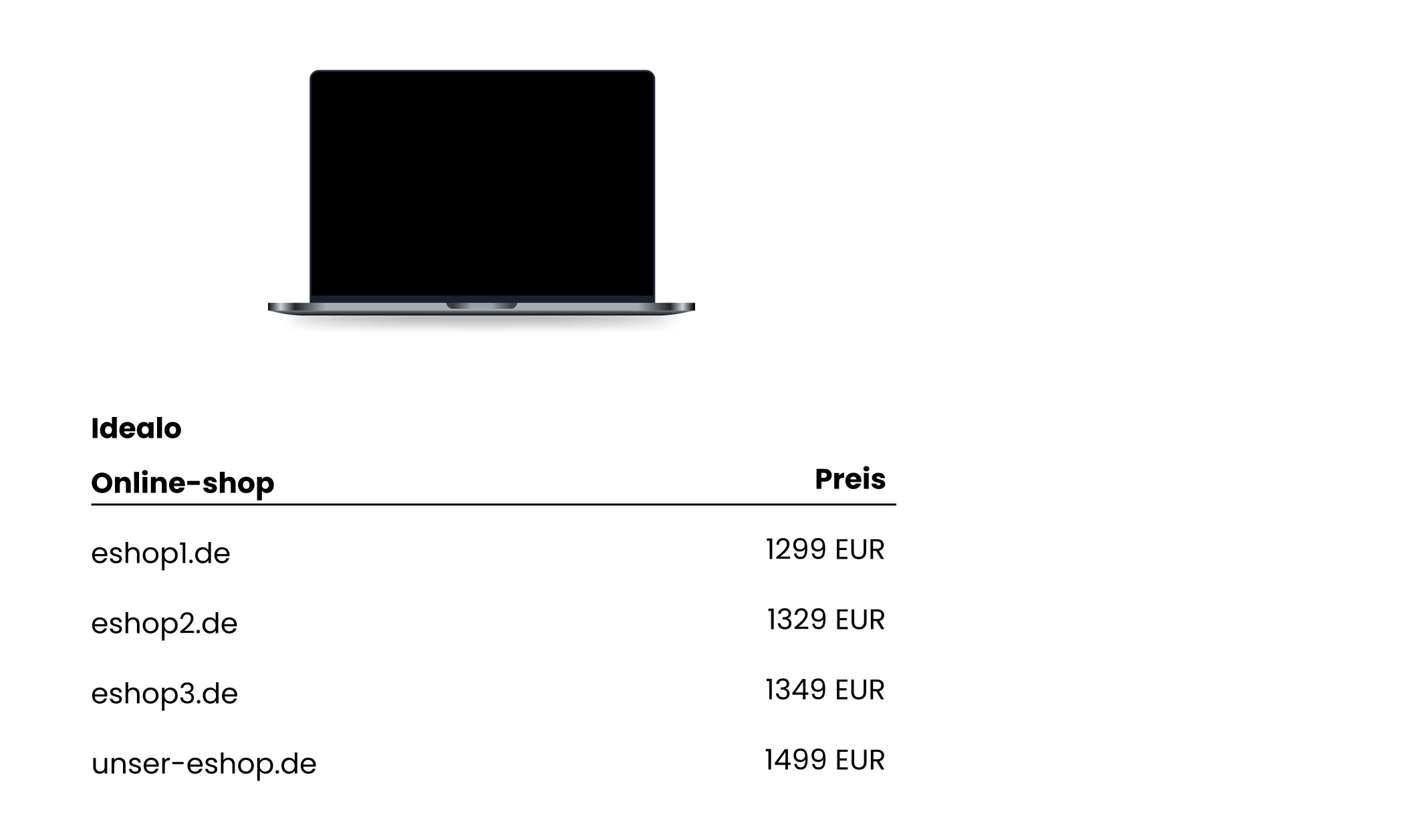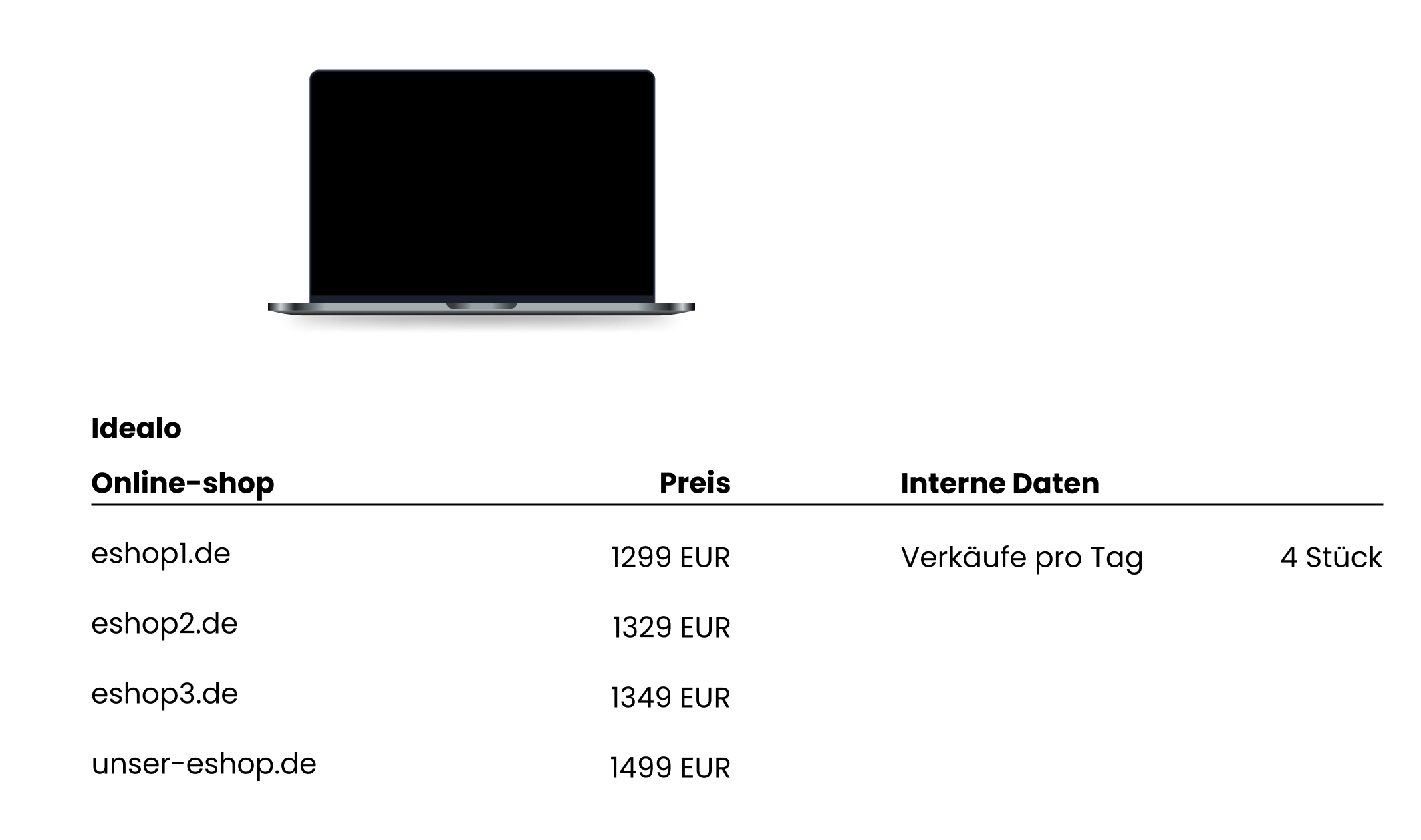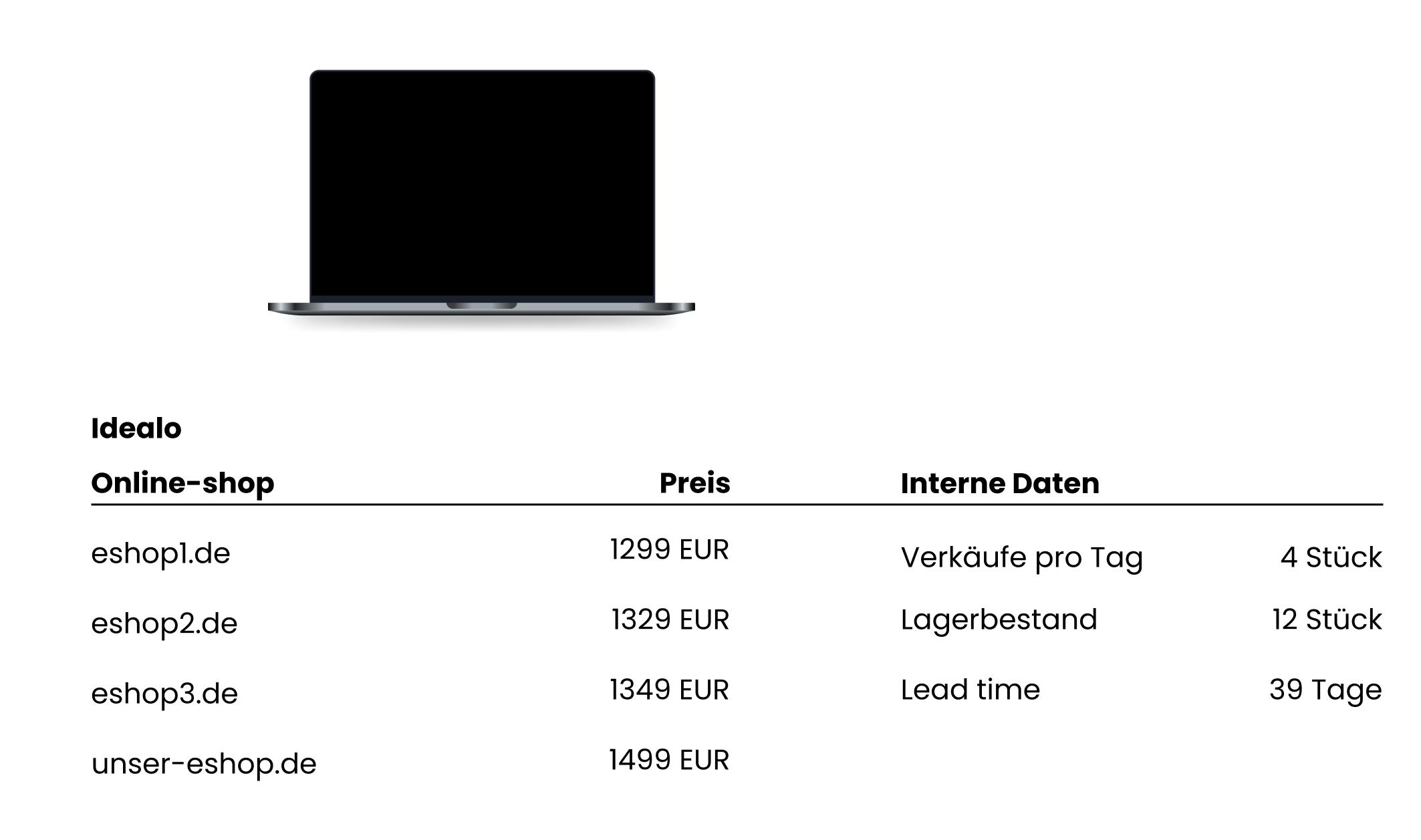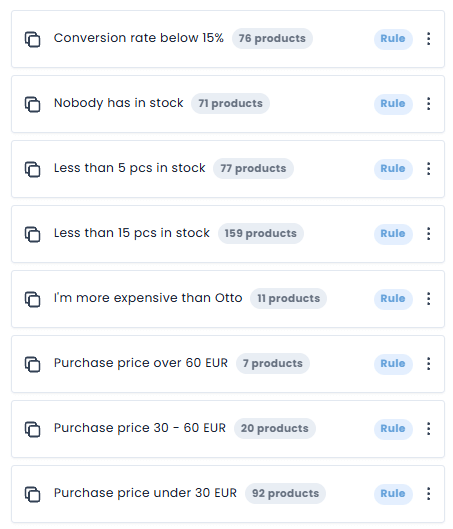How to define your pricing strategy
Pricing across multiple markets
When we first introduced dynamic pricing, we discussed small adjustments based on competitor prices. The examples of mild competitive pricing and underpriced products are useful general principles, but they don’t fully leverage the potential that comes from combining pricing with other data sources.
How would you price a product in this scenario?

With mild competitive pricing, we would reduce the price to around € 1,300.
But what happens when we factor in sales performance data?

Suddenly, we see that the product still sells even when priced higher than competitors. In this case, there’s no need to lower the price, as we can maintain our margin without sacrificing profitability.
But what happens if we add stock availability data to the equation?

At that point, we see that with the current sales volume, our stock will last only three days, while the next shipment is 39 days away. In this situation, we could even increase the price to manage demand more effectively.
Or, we could negotiate faster delivery with the supplier. The more data we have and the more holistically we approach pricing, the more tools we gain to maximize profitability.
Below are some real-world pricing tactics commonly used in the market. Some have been mentioned in previous chapters, but we include them here for completeness.
There are many conditions and variables you can use in dynamic pricing rules. We recommend starting step by step—first testing simple rules, then gradually combining different conditions once you’ve validated the basics.
Apply competitive pricing only to products that are already close to the lowest competitor price and reduce prices only where it makes a meaningful difference (e.g., lowering by € 1 instead of aggressively undercutting).
The best results come from combining multiple pricing rules to account for various market scenarios.
A common approach is to layer pricing rules. Some rules are conservative, ensuring a stable pricing strategy aligned with your brand positioning. Other rules respond to market exceptions—such as competitor promotions, stock shortages, seasonal demand spikes, or other temporary market changes.

Typically, the logic works as follows: a product tries to match the highest-priority rule first. If it doesn’t meet the conditions (e.g., the product is not currently underpriced), it moves down the priority list until it finds a rule that applies, and the price is adjusted accordingly.
A common approach to combining rules is to place basic rules at lower priority levels and assign more specific or rare rules to higher priorities. These "exotic" rules may trigger only occasionally, but when they do, they can have a significant impact on pricing (e.g., "Increase the price significantly if I am the only seller offering this product.").